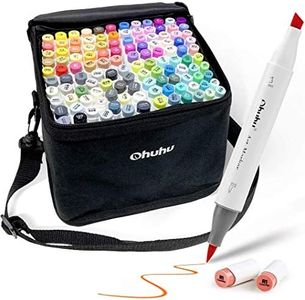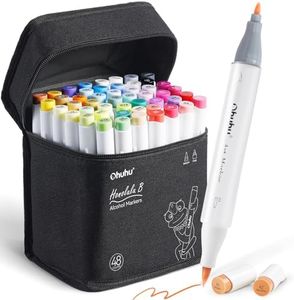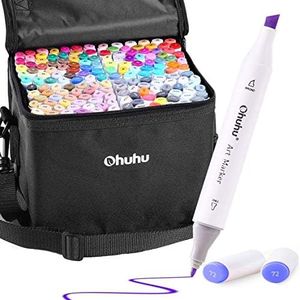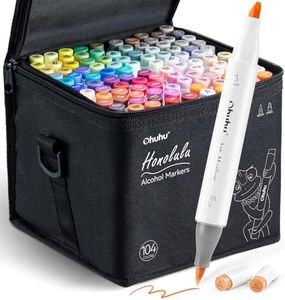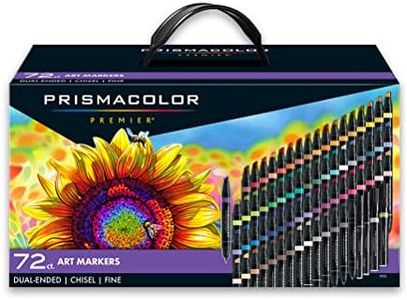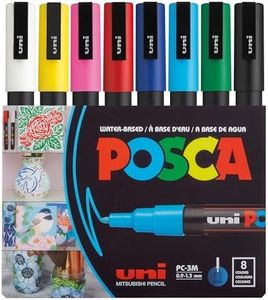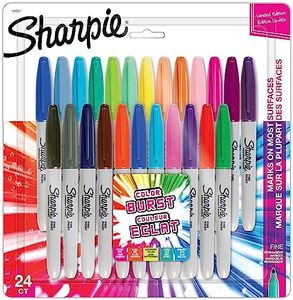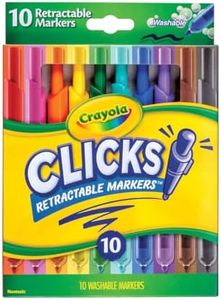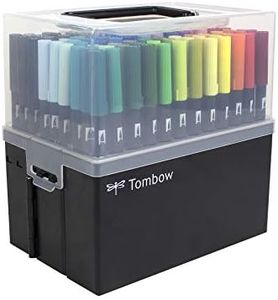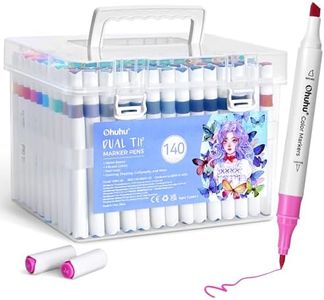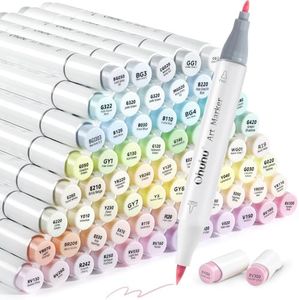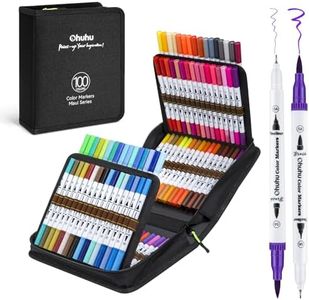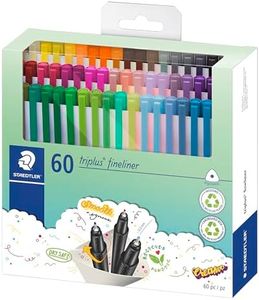We Use CookiesWe use cookies to enhance the security, performance,
functionality and for analytical and promotional activities. By continuing to browse this site you
are agreeing to our privacy policy
10 Best Colored Markers
From leading brands and best sellers available on the web.Buying Guide for the Best Colored Markers
When choosing colored markers, it's important to consider factors that affect how you plan to use them. Whether you want markers for art projects, note-taking, coloring books, or professional design, understanding marker features will help you select a set that matches your preferences and needs. A thoughtful approach to each key aspect will help ensure your markers perform well, last long, and bring you satisfaction in use.Ink TypeInk type refers to the kind of fluid inside the marker that gives it color. The two main types are water-based and alcohol-based inks. Water-based inks are usually less prone to bleeding through paper and are easy to wash off skin and clothing, making them ideal for children or classroom use. Alcohol-based inks tend to be more vibrant, dry quickly, and are permanent, which is great for professional art or design projects. When choosing, consider who will be using the markers and on what surfaces; for kids or everyday use, water-based is often better, while creative projects may benefit from alcohol-based options.
Tip Shape and SizeThe tip shape and size determine the line width and style you can create. Common tip shapes include fine, bullet, chisel, and brush tips. Fine tips are best for detailed work like outlining or writing, bullet tips offer good control for coloring and general tasks, chisel tips allow for both broad and thin lines, and brush tips mimic a paintbrush for more expressive strokes. When deciding, think about your primary activities—detail work favors fine or bullet tips, large areas or calligraphy benefit from chisel or brush tips.
Color RangeColor range refers to how many and which colors are available in a set. Smaller sets may offer basic colors, while larger collections provide more variety, including shades and specialty tones. If your main activity is coloring simple designs or everyday labeling, a limited palette may suffice. For art, design, or creative expression, a broader range ensures flexibility and the ability to blend or layer colors more effectively. Assess whether you need just the basics or a complete spectrum based on your projects.
Ink Longevity and Fade ResistanceInk longevity addresses how long the marker ink lasts before drying out, while fade resistance determines how well the colors hold up after exposure to light or time. For casual, temporary use, this may not be a major concern. However, if you are creating work intended to be displayed or kept long-term (especially in sunlight or archives), it’s important to pick markers with high fade resistance and longer-lasting ink. Look for markers that specifically mention archival quality or lightfastness if permanence is important to you.
Safety and OdorSafety and odor concern the chemical composition of the markers and any smell they may emit when in use. Some markers have a strong odor due to the type of ink solvent used, which can be unpleasant or cause headaches, especially in enclosed spaces. Water-based markers are typically labeled as non-toxic and have little to no odor, making them best for children or sensitive individuals. If you know you or those around you are sensitive to smells, or if children will use the markers, prioritize options that are non-toxic and low-odor.
